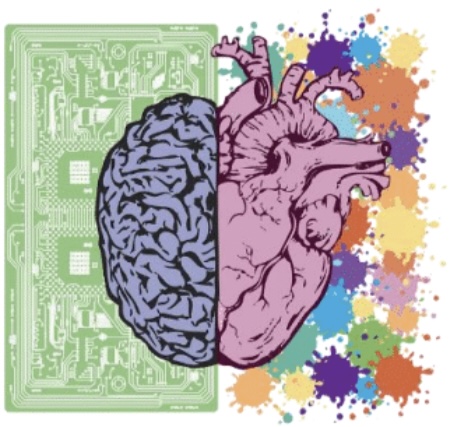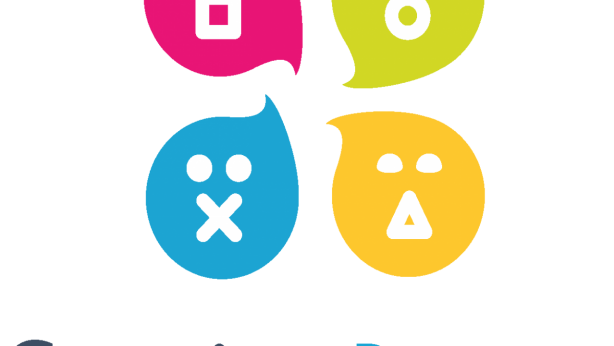EPA Webinar: Creative Thinking – Why is it important and what role does education play?

Report on EPA Webinar on 19th June 2021
Creative Thinking: Why is it important and what role does education play?
Link to webinar recording: https://www.dropbox.com/s/8cb8mfb5yza6cfc/GMT20210619-080008_Recording_1920x1080.mp4?dl=0
The webinar started with the welcoming words by the president, Víctor Petuya, to the EPA members and other organisations that were participating in the webinar. He reported that the topic for 2021 was “Creative Parents – A Resource for the Future of Education” and that during the year, EPA is focusing on this topic and is giving priority to its participation in meetings and conferences related to it. So within this scope, EPA had organised this webinar on Creative Thinking. Victor thanked Claire Blondel, the keynote speaker, before speaking about how EPA is part of a consortium of a European project entitled `Creative Thinking for Parents` that is being led by EPA member FAPEL Luxembourg, and as the aim of the project is directly related to the content of this webinar this would be a good opportunity to introduce the project. Victor then handed over to Arja Krauchenberg, who explained this Erasmus+ project involved five other partners from various countries. Arja explained the project´s motto, the habit of continually doing things in new ways to make a positive difference to our lives, and how the idea for the project arose as a result of the covid pandemic and the need of parents to find things to do with their children whilst quarantined at home. A survey has already been carried out and materials to be developed include training material and modules, an online Parent’s Guide and activities on a webApp, which will remain available once the project itself has terminated. The main objective of the project is to develop the creative thinking skills of parents so that they can help their children to develop such skills. Participants of the webinar were invited to share with EPA via email any activities that they enjoy doing with their children for them to be included in the webApp. The project´s website is www.creativethinking4parents.eu and the Facebook page is @creativethinkingforparentsproject and further information about the project will be shared with EPA members at future General Assemblies.
Valerie Gardette then introduced Claire Blondel as the keynote speaker, explaining that she has lived and worked in the educational sector in six different countries, practicing various approaches to pedagogy and her actions are all driven by the will to help the educational system to build up the skills we would all like to see shine in the world: cooperation, creativity, empathy and positive leadership.
Claire thanked Valerie before explaining that they were going to look at why Creative Thinking is important, how it works, and how parents can help. Most people associate creativity with art and it is very difficult to consider it in other fields, but it is needed in many different situations, for example when cooking, driving, at work, in relationships etc. Therefore, creativity is a competence that we all need. More importantly, creativity is a competence that our children will need for the future as they will face more challenges than we do now.
Historically, it was psychologists who were interested in studying creativity in the brain, but nowadays more and more neuroscientists are becoming interested in this field. Claire cites the American JP Guildford as the first psychologist who encouraged others to study creativity – whether it is inherited or developed over the years (the answer is both), and the neuroscientist Nancy Andreasen who has worked for a long time with creativity and wrote a book which shares various studies that look at creative people to see if they have certain shared traits, which they do:
- tolerance for ambiguity – Claire gives the example of being recently married and having to move to Hong Kong for her husband´s work, where she then realised that everything she had previously considered as ‘normal’ was actually just `French` and there are actually many different ways of doing things. Creative people are also happy with unanswered questions, which many others may find stressful.
- adventurous – creative people like to explore new environments.
- curious – they are interested in many different topics and like to see how things work. Also, they can become very absorbed in one particular task for a period of time.
- rebellious – as creative people are not very good at following rules.
- a high IQ is not necessary – it has been found that highly intelligent people do not normally have many creative skills.
- persistence – as creative people receive many rejections for their ideas, for example Thomas Edison, so they need to remain focused even when they receive negative comments and feedback.
- observance – creative people can associate ideas of doing things in a different way through observing what is going on around them.
- playful – they are comfortable with being childish.
- sensitive – to what others as well as themselves are experiencing.

Claire brings in the example of Leonardo Da Vinci painting the Last Supper, which took four years to complete as it is perfectly normal for creative people to need time for their brains to relax and wander in order to have new ideas. She then reverts back to Nancy Andreasen’s book where the author divides up the creative process into four steps:
- Preparation – it is necessary to absorb diverse information through your different senses, and to meet different people from various social standings and environments in order to have new ideas.
- Incubation – let your brain do the work, without it being overwhelmed by too many external stimuli. Richard Davidson, a psychologist, has proven that gamma synchrony is much higher in people who know how to meditate and let their brains disconnect, allowing them to make more connections.
- Eureka moment – when the great idea arrives!
- Production – it is time to act. This is very important as if you do not produce your idea, your motivation will drop. It also trains you to fail, which is good as you will get over feeling scared of failing and will therefore continue to be creative. It is essential to allow children to complete this final stage, and also to give them the appropriate feedback. You could praise a child with a label (you are a genius – fixed mindset) or with feedback (this was difficult but you preserved – growth mindset). It has been demonstrated that by praising with feedback, children will continue to be creative and try other, often more difficult things.
Participants were then invited to answer some questions about how creativity is killed and how it can be fostered, and to brainstorm tips on how to foster children’s creativity at home (the resulting tips can be seen by following the link below to the PowerPoint slides). There was then time for some open discussion where participants spoke about the importance of children making their own toys etc rather than just being given everything, and not just to encourage creativity but also to increase sustainability to help our planet. Victor asked Claire how could schools change the way they evaluate creativity, to which she replied that it is important to explain to students on which skills they are going to be evaluated and then to provide them with feedback on their performance. If schools are only using evaluation to rank their students, it is not useful, particularly for the students themselves. Following another participant’s question with regards to creativity in career guidance, Claire pointed out that many universities are only interested in academic marks, whilst in the working world employers are looking for skills such as public speaking, problem solvers etc. Arja pointed out that in Europe transversal skills, which include creativity, are built into all the countries’ education bills, but then no one seems to have responsibility for implementing these skills in schools.
Valerie invited all participants to work together to find solutions to the issues that had arisen during the webinar and to be involved in the project Creative Thinking for Parents.
The event was closed by the EPA President, Victor Petuya, who thanked Claire for her availability to speak in the webinar, and all the participants for their attendance and active contribution. Victor pointed out that children would be more successful if their parents were enthusiastically engaged in their education, including their creativity. Victor closed by inviting all the participants to join EPA In future webinars and events.
Link for Claire’s PowerPoint slides:
https://drive.google.com/file/d/13y8O2U8zWS21FMSMT59FFLk87NWYKmpK/view?usp=drivesdk
Link for Claire’s notes to her slides:

